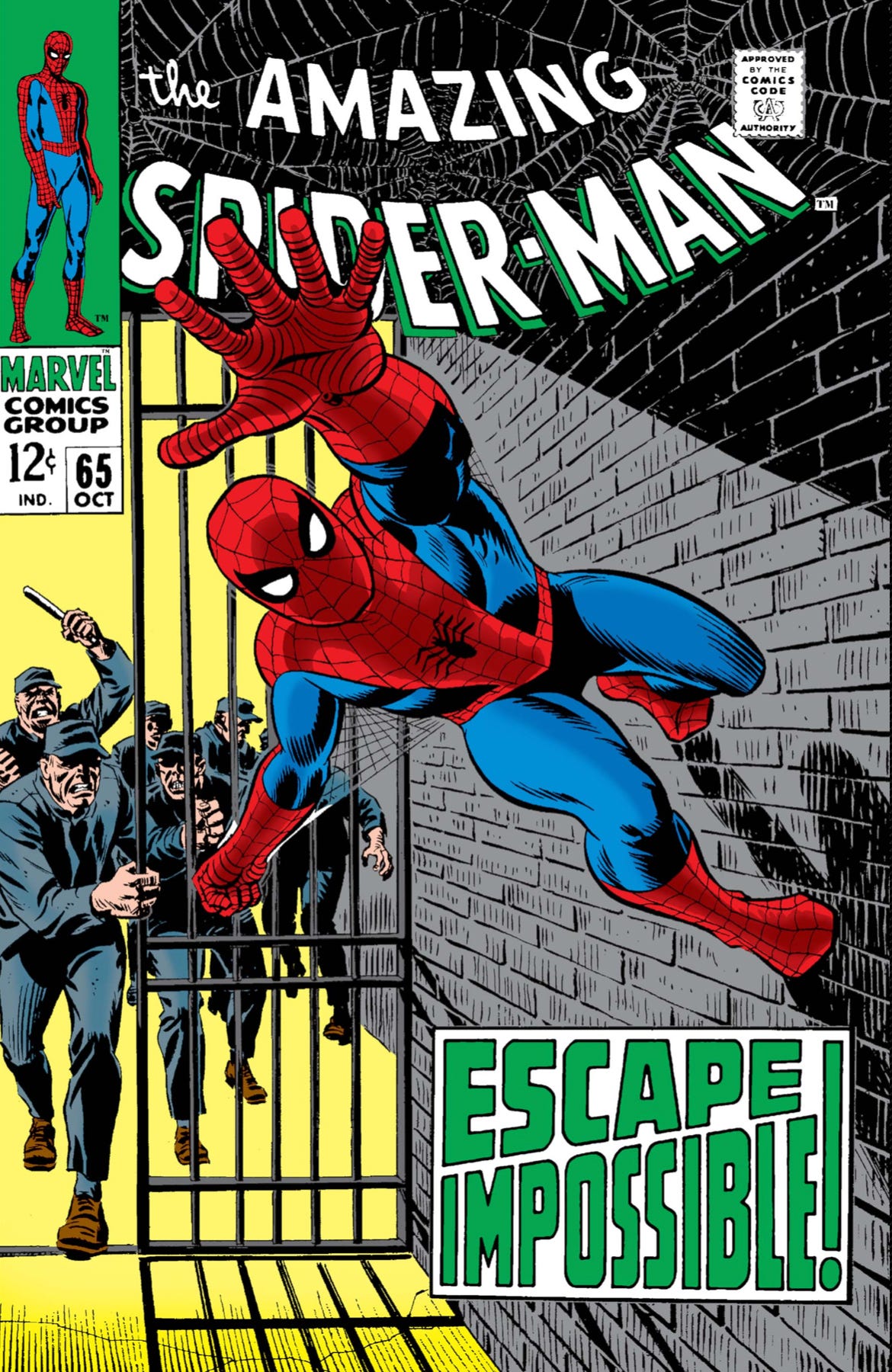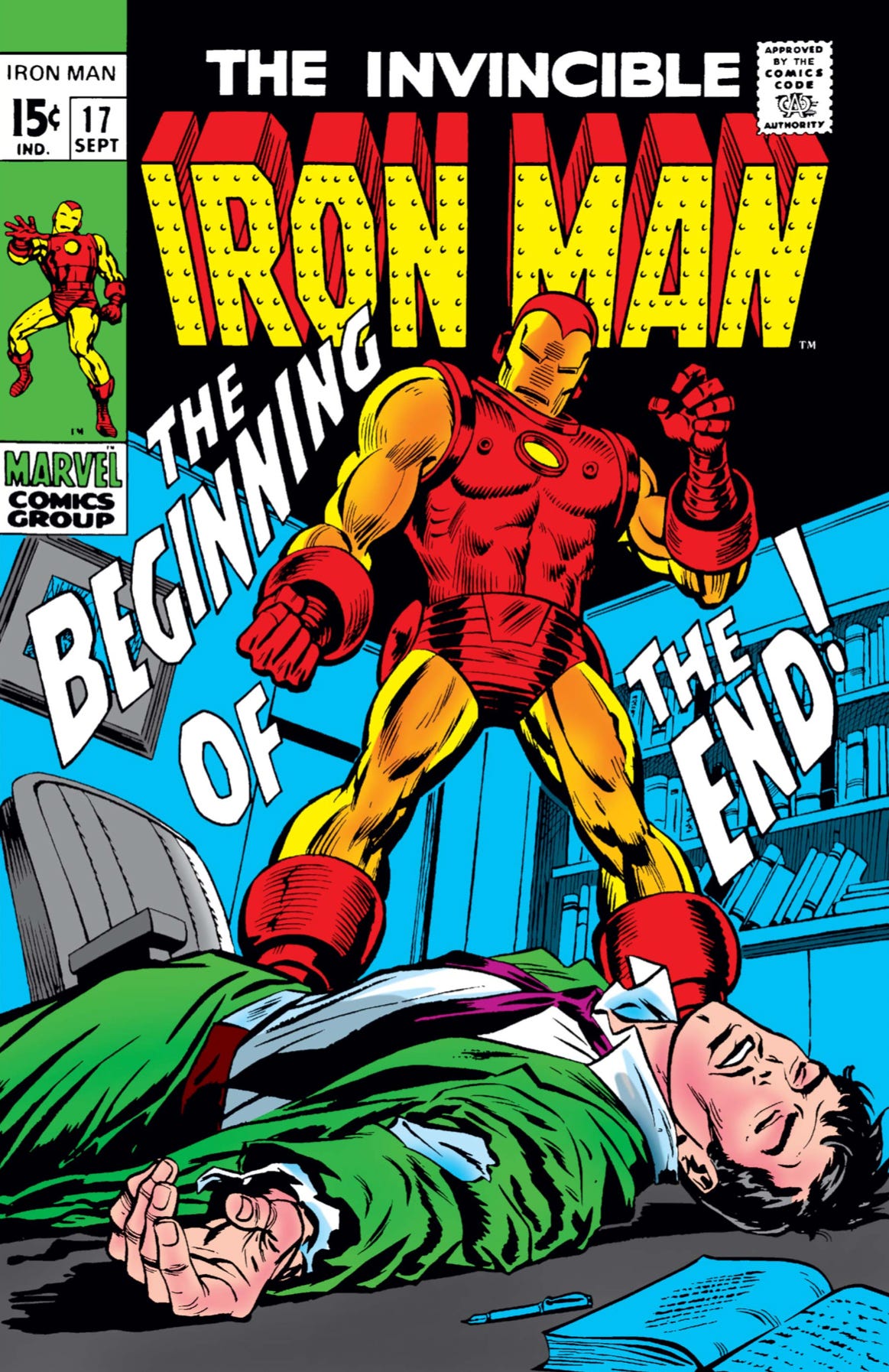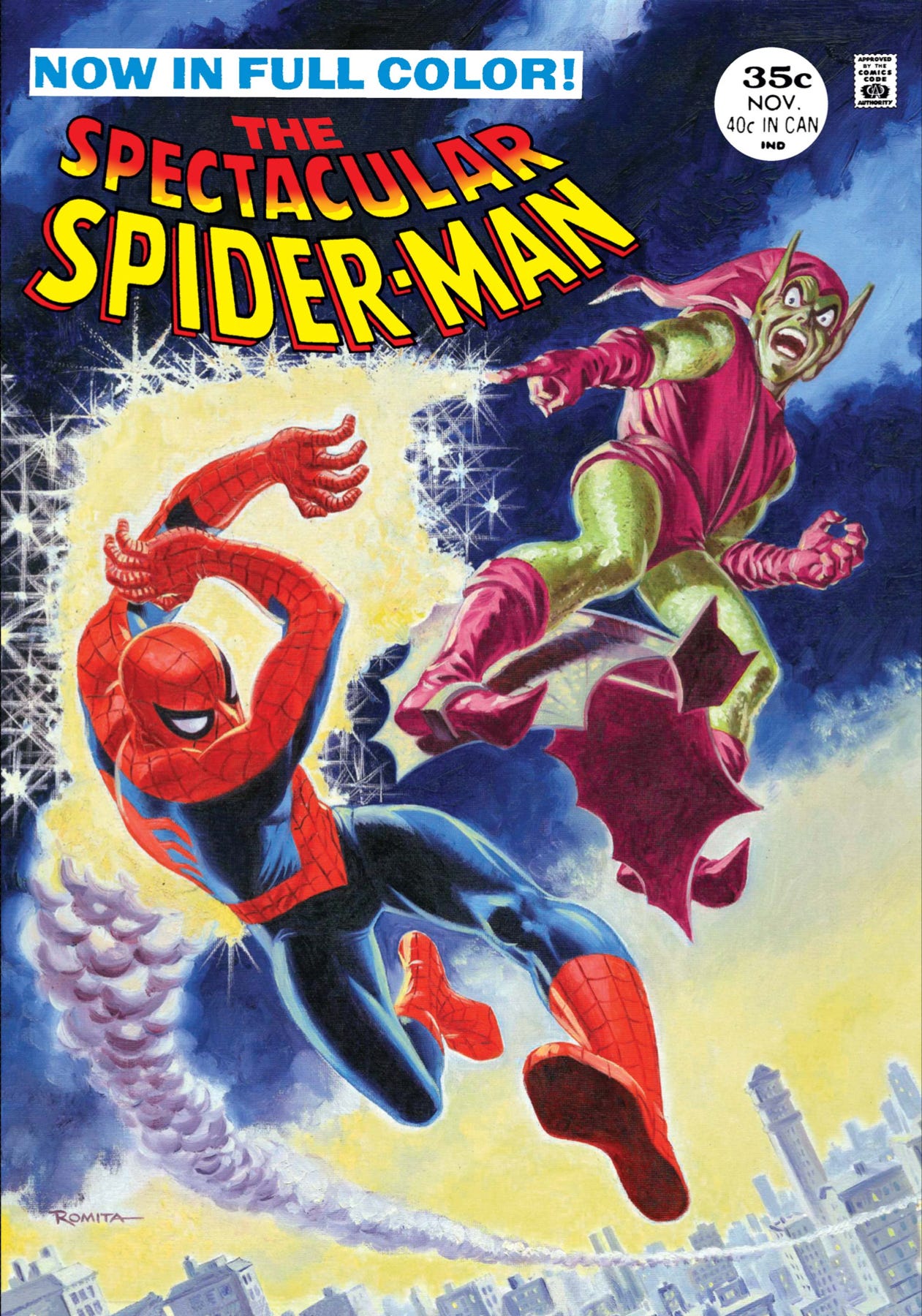Round two! We recently looked at the top ten stories from the first five years of the Marvel Universe (Comics, not Cinematic), so let’s move on to the second five years.
In that previous five-year span, everything was fresh, exciting, and unlike anything previously seen in comic books. The freewheeling creativity resulted in a wide range of quality, among which were plenty of enduring characters and memorable stories. In this second increment, the Marvel creators have settled into a comfortable rhythm, often achieving a more consistent level of quality. It won’t be every modern reader’s cup of tea—I can’t say it’s my favorite era—but this period has its gems. Here are ten of them.
(Do I need to give a spoiler warning for comics from decades ago?)
10) The Amazing Spider-Man #65 (by Stan Lee and John Romita)
The police arrest an injured Spider-Man … right before the prisoners revolt. Spidey must use his wits to navigate the situation—and save the life of his girlfriend’s father, Capt. Stacy. It’s a fun adventure that offers a different type of threat than usual while ongoing subplots continue to simmer in the background. The issue helps strengthen the growing bond between Spider-Man and Capt. Stacy, giving Peter a much-needed friend and mentor, one who instinctively knows Spider-Man can’t be all that bad.
9) Iron Man #21 (by Archie Goodwin and George Tuska)
Tony Stark accepts reality—being Iron Man is likely to put a fatal strain on his heart, so it’s time to turn the mantle over to someone else. But in an ironic twist, his chosen successor, a strong-willed boxer and Iron Man fan named Eddie March, has a life-threatening condition of his own: a blood clot. Knowing the risks, Eddie accepts Tony’s offer to take over. If he’s got only a little time left anyway, he might as well use it to do good. It’s a nice little story of one hero inspiring another.
8) The Amazing Spider-Man #50-52 (by Stan Lee and John Romita)
This three-parter begins with the iconic “Spider-Man No More” episode that inspired portions of the plot of Spider-Man 2, but its lasting contribution to the Marvel Universe is a strong debut for the Kingpin. Spider-Man’s hiatus emboldens the Kingpin to up his game, and, though his best villainous days as Daredevil’s archenemy are ahead of him, he proves to be a formidable threat from the get-go, besting the newly returned Spider-Man in combat and locking Spidey and J. Jonah Jameson together in a deathtrap. And it all ends with a supporting character’s noble sacrifice. Good, solid ’60s Marvel action all around.
7) Iron Man #17-18 (by Archie Goodwin and George Tuska)
This story is quintessential Iron Man. An LMD (Life Model Decoy) of Tony Stark acquires sentience, but lacking a life of its own, it steals the identity of its creator. Stark’s own technology supplants him as the head of his company and as Iron Man, leaving him with almost nowhere to turn—except cheesy villain Midas and, more interestingly, the rogue Madame Masque. The story escalates to an Iron Man vs. Iron Man battle, with Tony—and his weak heart—giving everything he’s got while making do with a primitive version of his armor. In addition to providing the reliable sci-fi staple of out-of-control technology, the story also serves as an excellent metaphor for a man being his own worst enemy.
6) The Avengers #57-58 (by Roy Thomas and John Buscema)
The Avengers manages its best issues up to this point, with the introduction of the Vision and another tussle with the recently introduced Ultron. The android (or, more accurately, “synthezoid”) Vision must rebel against his creator in order to establish his humanity. Then, when the Avengers consider him for membership, he learns whether an artificial man can gain acceptance among humans. John Buscema’s art is in top form in these two issues, ranging from the Vision’s eerie, humanoid-but-inhuman form on the first page to a splash panel of him shedding a tear on the last.
5) The Amazing Spider-Man #39-40 (by Stan Lee and John Romita)
We get some excellent forward momentum in this two-parter. The Green Goblin’s identity had been a mystery since his debut a few years earlier, and here we finally learn that he’s Norman Osborn, father of Peter’s new classmate Harry Osborn. But not only does Peter learn who the Goblin is—the Goblin also becomes the first person to learn that Peter Parker is Spider-Man. The shared secret and personal connection add layers to their conflict that were unique among Spidey villains, instantly catapulting the Green Goblin to the top tier of foes. And what’s especially great is how, in the end, Spider-Man insists on showing compassion for his enemy, despite the greater threat the Goblin now poses.
4) Fantastic Four #48-50 (by Stan Lee and Jack Kirby)
The FF are at their cosmic best in this classic three-parter, in which Lee’s and Kirby’s imaginations are firing on all cylinders. Galactus arrives to eat the planet, and the Fantastic Four must figure out how to defeat a being so powerful that they’re nearly insignificant by comparison. The Silver Surfer debuts with his own arc of a servant choosing to rebel against his master, and he introduces tension in the Thing’s relationship with Alicia Masters. The fate of the world is at stake like never before, but Lee and Kirby never neglect their characters.
3) The Spectacular Spider-Man Magazine #2 (by Stan Lee and John Romita)
It’s hard not to recognize elements of the first Spider-Man movie in this extra-sized issue. The Green Goblin regains his memory, putting Spider-Man’s life—and secret identity—in jeopardy. A highlight is a tense dinner scene in which Norman Osborn, using only semi-polite conversation, pokes and prods at Peter, taunting him while Mary Jane, Gwen, and Harry remain mostly oblivious to the conflict unfolding before them. The issue takes what happened in the previous Green Goblin two-parter and builds on it for an even stronger story.
2) The Amazing Spider-Man #88-90 (by Stan Lee and Gil Kane & John Romita)
Spidey fails, losing a role model for the second time in his young life and learning another harsh lesson about the importance of responsibility. What starts as a solid Doctor Octopus story becomes a classic when Capt. George Stacy gets caught in the crossfire while performing his own heroic act. The last two pages display more sincere emotion than most entire storylines from this era, and it succeeds because Stan Lee & Co. had put in the hard work over the previous few years’ worth of Spider-Man stories, building strong relationships between Peter Parker, Gwen Stacy, and Capt. Stacy.
1) Fantastic Four #51 (by Stan Lee and Jack Kirby)
The Galactus Trilogy may be the more famous story, but I say this is the better one—indeed, the best of this five-year increment. More than any other issue in the Lee-Kirby era, it expertly grounds big sci-fi spectacle in a very human story—specifically, an envious nobody learning about heroism by spending a day in the Thing’s skin (or rocks, I guess) during Mr. Fantastic’s first voyage to the Negative Zone. It’s everything the Fantastic Four of any era should aspire to be, and it achieves it without any of the usual fisticuffs.
Those are my selections, but what are your favorites from this era?
Next: the best of 1971-1975.
I write superhero novels. Click the button below to take a look (and thank you to everyone who already has!).
















This man... is a strong contender for best comic of all time and 9 other excellent choices